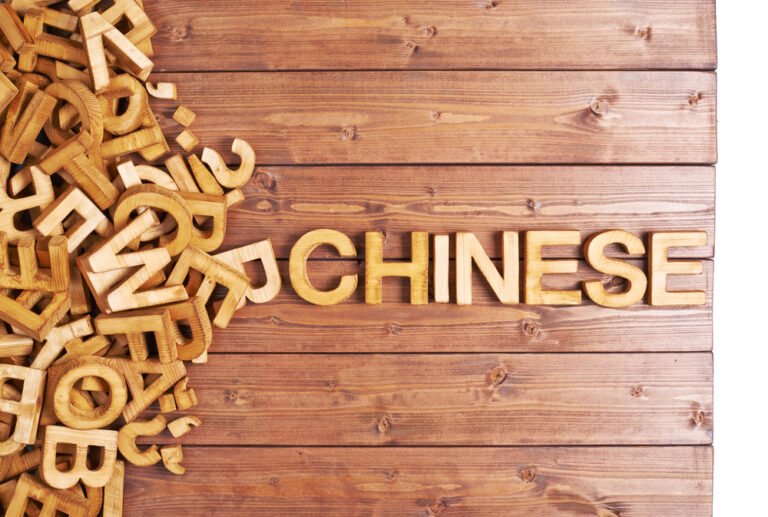speak fluent chinese 3-5x faster
Yes! Take the ScorecardChinese Grammar: A Guide to Particle Placement

Welcome to the surprisingly quirky world of Chinese grammar, where the heroes of the story are none other than the mighty Chinese particles. These little linguistic dynamos might not look like much at first glance, but don’t be fooled — they’re the secret sauce that gives Chinese its distinctive flavor.
Now, if you’re imagining Chinese particles as tiny ninjas of grammar, silently shaping the meaning of sentences, you’re not far off. They sneak in to indicate tense, mood, and a whole lot more, often leaving learners both amazed and a tad bewildered.
Deciding to master these particles is a bit like deciding to marathon your favorite TV series. It seems like a great idea at the start, and it is, but you’ll soon find there are more twists and turns than you anticipated. But don’t panic. This guide is here to be your binge-watching buddy, making sure you don’t miss any crucial plot points.
So, grab your popcorn (or your flashcards, if you’re so inclined) and let’s get into the world of Chinese particles. By the end of this guide, you’ll not only have a firmer grasp of Chinese grammar but might just find yourself chuckling at the thought of all those times you mixed up your “le” with your “de.” Let the adventure begin!
The ABCs of Chinese particles

When you first start learning Mandarin Chinese, you’ll quickly encounter particles. These tiny words pack a punch, shaping the essence and flow of sentences in ways that are uniquely Chinese.
What are Chinese particles, anyway?
If Chinese grammar were a party, particles would be the guests who bring the whole event to life. They’re not the flashy decorations or the catchy music, they’re the subtle interactions and exchanges that give the party its atmosphere. If you’re learning Chinese, understanding particles is crucial because they help shape the mood, tone, and clarity of sentences.
Without them, you’d end up with the linguistic equivalent of a guest list without names — confusing and not very helpful.
The party of particles: Who’s who?
It’s time to meet the guests of honor at our grammar gala. From the mood-setters to the sentence-architects, each particle has a unique role that contributes to the richness and depth of the Chinese language.
Modal particles
These are the mood setters. Just like how your tone of voice can change a sentence’s meaning in English, these particles alter the mood in Chinese sentences. They’re the difference between a statement and a question, a command and a suggestion.
Example: “吗 (ma)” – Turns a statement into a question.
English: You are American. -> Are you American?
Pinyin: Nǐ shì Měiguó rén. -> Nǐ shì Měiguó rén ma?
Simplified Chinese: 你是美国人。-> 你是美国人吗?
Structural particles
Think of these as the architects of Chinese grammar. They structure a sentence, marking relationships between words and phrases, much like how punctuation is used in English. They’re crucial for making your sentences not just grammatically correct but also understandable.
Example: “的 (de)” – Used to show possession or modify nouns.
English: The book of the teacher -> The teacher’s book
Pinyin: Lǎoshī de shū
Simplified Chinese: 老师的书
Aspect particles
These particles talk about the action — whether it’s completed, ongoing, or yet to happen. They’re what give the Chinese language its sense of time without relying on tenses as English does. Aspect particles like “zhe” are like time travelers of the particle world, giving you a glimpse into the when of actions.
Example: “了 (le)” – Indicates a completed action.
English: I eat. -> I have eaten.
Pinyin: Wǒ chī. -> Wǒ chī le.
Simplified Chinese: 我吃。-> 我吃了。
Directional particles
These nifty particles are all about movement, indicating direction in a sentence. They’re the difference between going up, down, in, or out. When learning Chinese, directional particles help you navigate the space around you, making sure you’re always headed in the right direction.
Example: “上 (shàng)” – Indicates direction (up/onto).
English: Go up the mountain.
Pinyin: Shàng shān
Simplified Chinese: 上山
With these characters at your party, you’re guaranteed an interesting time. But as with any gathering, knowing a little about your guests beforehand makes for smoother interactions. Let’s keep the confusion at bay and ensure your sentences are the life of the conversation, not the cause of a polite but perplexed silence.
Related Reading: 过 Guo in Chinese – The Particle To Express Past Experiences
Mastering particle placement

Now that we’ve met the all-stars of the Chinese particle world, it’s time to tackle the question that’s probably been nagging at you: “Where do I put these tiny yet mighty words in a sentence?” Well, you’re about to become a particle placement pro.
The secret map to particle placement
Think of your journey through Chinese grammar as a road trip. Your car is packed, your playlist is set, and your destination is “Fluency City.” But what’s a road trip without a map? Particle placement is your GPS, guiding you to your destination without getting lost in “Grammar Gorge” or “Syntax Swamp.”
Modal particles
These usually take the rear seat, right at the end of a sentence. They’re like the period at the end of an English sentence but much more informative. Remember our friend “吗 (ma)?” Parking it at the end of a statement magically transforms it into a question.
Structural particles
“的 (de)” is the most famous member of this group, often found linking nouns to their descriptors or showing possession. It’s a bit of a chameleon, changing its position based on what you’re trying to convey. But a good rule of thumb? Keep it close to the noun it’s modifying.
Aspect particles
“了 (le)” likes to follow a verb, giving it a temporal context. If you’ve completed an action, “了” hops right after the verb to tell the world you’ve done it. It’s all about timing with this one. You can investigate this particle more in our guide 了 le in Chinese: The ‘Change’ Particle.
Directional particles
These particles point the way, usually coming after a verb to indicate direction. “上 (shàng)” doesn’t just mean up; it’s your guide, showing whether you’re going up, onto, or into something. Follow the verb, and you won’t go wrong.
Common slip-ups and how to dodge them
Even the most seasoned travelers make wrong turns, and the same goes for learners and Chinese particles. But with a few tips, you can steer clear of the most common pitfalls.
- Mixing up “了 (le)” and “着 (zhe)”: One’s for completed actions, the other’s for ongoing states. A classic mix-up, but remember: “了” is for actions that are done and dusted, while “着” keeps things happening in the present.
- Overusing “的 (de)”: It’s tempting to sprinkle “的” everywhere, but less is often more. Use it to clarify but resist the urge to make every noun possessive. It’s the difference between a sentence that flows and one that feels cluttered.
- Forgetting modal particles altogether: It’s easy to focus so much on getting the nouns and verbs right that you forget the particles that set the tone. But remember, without “吗 (ma)” at the end, you’re stating, not asking. It’s the difference between a nod and a raised eyebrow in your conversation.
Practice makes perfect
The best way to master particle placement is practice, practice, and more practice. Try crafting sentences with each type of particle. Then, mix and match them. Experiment with making statements, asking questions, and describing ongoing actions. The more you play with them, the more intuitive their placement will become.
Related Reading: Best Way to Learn Mandarin By Yourself: 15 Essential Tips
Practical magic: Applying what you’ve learned

Alright, you’ve now got the inside scoop on Chinese particles and where they should snugly fit into a sentence. But let’s be honest, knowing the rules and applying them are two different ball games. It’s like learning to swim — you can’t really do it by just reading about it.
So, how about we jump in and get our feet wet? Here’s where the magic of practical application comes into play.
From theory to practice: Particle placement in action
Imagine you’re the chef of your linguistic kitchen. You know your ingredients (particles), you’ve read the recipe (rules of placement), and now it’s time to cook (speak and write). Here’s how to turn theory into delicious practice:
- Start simple: Don’t try to prepare a five-course meal before you’ve mastered the art of boiling water. Begin with simple sentences, focusing on one particle at a time. For example, play around with “了 (le)” by converting present actions into completed ones. “我吃饭 (I eat rice)” becomes “我吃饭了 (I have eaten rice).”
- Mix and match: Once you’re comfortable with individual particles, start combining them. Create sentences that use a structural particle and an aspect particle together. Watch how they interact, like spices combining to bring out new flavors.
- Imitate and innovate: Find sentences in Chinese that use particles and mimic them. Then, change parts of the sentence while keeping the particle in place. It’s like learning to play a song on an instrument and then riffing on the melody.
- Practice with purpose: Look for opportunities to use what you’ve learned in real-life situations. Whether it’s writing a diary entry in Chinese, chatting with a language exchange partner, or leaving comments on a Mandarin learning forum, real-life practice will solidify your understanding.
Mistakes are just unintended humor
Remember, every mistake is a learning opportunity (and sometimes, a good laugh). Maybe you’ll accidentally say “我吃了猫 (I have eaten a cat)” instead of “我看到了猫 (I have seen a cat).” Sure, it might raise some eyebrows, but it’s also a memorable way to remember the difference between “吃 (eat)” and “看 (see).”
The daily particle challenge
To really cement your learning, try the “Daily Particle Challenge.” Each day, pick a new particle and use it as much as possible in your conversations, writings, and thoughts. Make it a game — award yourself points for creativity and usage. By the end of the week, you’ll be amazed at how much more natural particles come to you.
Related Reading: How to Use the Speech Shadowing Technique to Hack Chinese (or Any Language)
Becoming a Chinese particle pro

You’ve gone through the nuts and bolts of Chinese grammar and tackled the tiny titans known as Chinese particles head-on. Now, it’s time to look beyond and think about how you can continue to sharpen your skills and become a true particle pro.
Resources to keep you rolling
The route to fluency is paved with continuous learning and lots of practice. Here are some resources that can keep your learning engine humming:
- Apps and online platforms: There’s a world of apps out there designed to help you master Chinese grammar and particles. Look for ones that offer spaced repetition systems (SRS) for that extra memory boost.
- Mandarin Blueprint: Obviously, we’re going to mention The Blueprint. This innovative learning method takes you through the intricacies of Chinese grammar, including particles, with engaging videos and storytelling techniques.
- Language exchange: Find a language exchange partner or a tutor who can help you practice using particles in conversation. Sometimes, real-time feedback is the best teacher.
- Reading and listening practice: Dive into Chinese books, newspapers, and podcasts. Pay special attention to how particles are used in different contexts. It’s like being a language detective but without the magnifying glass (you can have a magnifying glass if you really want to).
Related Reading: Psychological Tricks and Tips for Learning Chinese
Unlock Chinese grammar and beyond
Hopefully, you’re feeling a bit more equipped and perhaps a little eager to further refine your mastery of Mandarin. But, as with any journey, knowing where you stand and where you’re headed next can make all the difference.
What if we told you that, in less than a minute, you could gain insights into your current Mandarin capabilities and receive a personalized guide to fluency? That’s exactly what our FREE Mandarin Fluency Scorecard offers. It’s not just a quick check-in on your progress; it’s a customized blueprint for your continued learning journey.
By completing the scorecard, you’ll discover the specific areas in Chinese that need your attention. Whether it’s fine-tuning your understanding of particles or expanding your vocabulary, knowing your weaknesses is the first step to turning them into strengths. By taking the Scorecard, you’ll discover the most appropriate next steps tailored to your current level of proficiency.
No more guessing about what to study next or wondering if you’re focusing on the right areas.
And, to top it off, you’ll receive a custom report with immediate action steps. This isn’t just a pat on the back and a generic “keep going” — it’s a tailored strategy to boost your learning efficiency and effectiveness.
Taking advantage of this free opportunity means you’re not just passively learning Mandarin. You’re actively designing your specific route to fluency. With each step informed by personalized insights and clear, immediate actions, you’re ensuring that your journey is as efficient as it is enjoyable.
This isn’t just another step. It’s a leap towards realizing your full potential in Mandarin. And remember, this invaluable resource is completely free and takes less than 60 seconds of your time. Don’t let uncertainty dictate your learning journey. Take the scorecard now, and embrace a future where fluency isn’t just a goal but a reality.








